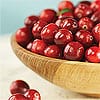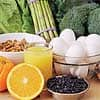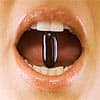
What's hot
What's hot
| News flashes are posted here frequently to keep you up-to-date with the latest advances in health and longevity. We have an unparalleled track record of breaking stories about life extension advances.
5-Loxin® rapidly improves arthritis symptoms
For the current randomized, double-blinded trial, Siba Raychaudhuri and colleagues used a formulation called 5-Loxin®, which is an extract of Boswellia serrata enhanced with 30% 3-O-acetyl-11-keto-beta-boswellic acid (AKBA, the plant's most active ingredient). Seventy patients who had been treated for osteoarthritis with nonsteroidal anti-inflammatory drugs prior to the study were divided to receive 100 or 250 milligrams 5-Loxin® per day, or a placebo for 90 days. Participants were evaluated after 1 week and at the end of each month until the study's conclusion, during which blood samples were collected and assessed for proinflammatory and toxicity indicators. Matrix metalloproteinase-3, an enzyme involved in joint damage, was measured in knee synovial fluid at the beginning and end of the study. As early as 7 days after beginning treatment with high dose 5-Loxin®, participants reported improvements in pain and functional ability. By the end of the study, both low and high dose-Loxin® were associated with pain and function improvement, and synovial fluid matrix metalloproteinase-3 was reduced. No adverse treatment effects were noted. "The high incidence of adverse affects associated with currently available medications has created great interest in the search for an effective and safe alternative treatment," Dr Raychaudhuri stated, "AKBA has anti-inflammatory properties, and we have shown that B. serrata enriched with AKBA can be an effective treatment for osteoarthritis of the knee". —D Dye Elevated plasma omega-3 fatty acids associated with reduced nonfatal heart attack risk
The researchers utilized data from 32,826 women who participated in the Nurses' Health Study between 1989 and 1990. Information obtained from dietary questionnaires was used to calculate omega-3 fatty acid intake. Blood samples were analyzed for omega-3 fatty acids EPA, DHA, DPA, and ALA in plasma and red blood cells. Over six years of follow-up, nonfatal heart attack was diagnosed in 146 subjects, who were each matched for age and other factors with two control subjects . Women whose plasma levels of EPA were among the highest 25 percent of the 434 cases and controls were found to have a 77 percent lower heart attack risk than those whose levels were in the lowest quarter. Those whose DPA levels were highest experienced a 60 percent lower risk. Subjects with higher plasma concentrations of EPA, DHA, and DPA tended to have increased high density lipoprotein (HDL) cholesterol and lower triglyceride levels. When red blood cell omega-3 fatty acid levels were evaluated, only nonsignificant associations with nonfatal heart attack risk were observed. Although a protective effect against fatal coronary heart disease and sudden cardiac death had been associated with omega-3 fatty acids in prior research, their effect in nonfatal heart attack has not been established. "This prospective study provides new evidence that plasma concentrations of EPA and DPA are associated with a lower incidence of nonfatal MI among US women," the authors conclude. —D Dye Breast cancer risk associated with less sleep in large study population
For the current study, reported in the June 6, 2008 issue of the journal Carcinogenesis, researchers at the University of Southern California Keck School of Medicine, along with scientists at the University of Minnesota and the National University of Singapore utilized data from female participants enrolled in the Singapore Chinese Health Study. Over an 11 year average follow-up period, 525 cases of breast cancer occurred. An association between increased sleep duration and a reduction in breast cancer risk was observed among postmenopausal women. Those who reported sleeping at least nine hours experienced a 33 percent lower risk than postmenopausal women whose sleep averaged six hours or less. This association was determined to occur primarily among lean women, and was stronger for those without a history of diabetes. When urine samples collected from 498 subjects were analyzed for a melatonin metabolite in order to examine the relationship between melatonin levels and sleep duration, the researchers found that levels averaged 42 percent higher among those who slept nine hours compared with subjects whose sleep duration was six or fewer hours. To the authors knowledge, the study is the first in an Asian population to examines the role of sleep duration, melatonin and breast cancer risk. "Our findings provide further indirect support that circadian disruption may be etiologically related to breast cancer and may contribute to the rising incidence of breast cancer in newly affluent societies throughout Asia." they conclude. —D Dye Cranberries create barrier against urinary tract microorganisms
Escherichia coli bacteria are found in the intestinal tract and are a common culprit in infections of the urinary tract. For the current study, Worcester associate professor of chemical engineering Terri Camesano and colleagues utilized a type of E. coli bacteria that has fine projections called fimbriae, as well as E. coli that do not have fimbriae. Fimbriae are present on the bacteria that cause urinary tract infections, and are believed to form strong bonds with the cells they infect. By administering cranberry juice to the bacteria, the researchers observed an increase in two indicators of the ability of the fimbriaed bacteria to attach to cells: Gibbs free energy of attachment, which measures energy expenditure by bacterium prior to attaching to a cell, and surface free energy, whose increase suggests the creation of a bacteria-repelling energy barrier. No effect was noted in the E. coli bacteria that did not have fimbriae. When urinary tract cells were exposed to fimbriaed E. coli, the bacteria readily attached to the cells. This effect was progressively inhibited when the cells were exposed to the same variety of bacteria treated with increasing concentrations of cranberry juice. "Our results show that, at least for urinary tract infections, cranberry juice targets the right bacteria—those that cause disease—but has no effect on non-pathogenic organisms, suggesting that cranberry juice will not disrupt bacteria that are part of the normal flora in the gut," Dr Camesano stated. "When we take E. coli. bacteria that have been treated with cranberry juice and place them in normal growth media, they regain the ability to adhere to urinary tract cells," she noted. "This suggests that to realize the antibacterial benefits of cranberry, one must consume cranberry juice regularly—perhaps daily." —D Dye Tea intake linked with reduced risk of cognitive impairment and decline in older men and women
The current study included 2,501 men and women of Chinese heritage who participated in the Singapore Longitudinal Aging Studies. Mini-Mental State Examination scores were used to evaluate cognitive function. Interviews conducted upon enrollment obtained information concerning the type and frequency of tea consumed. Test scores of 307 participants were indicative of cognitive impairment. The risk of cognitive impairment fell with increasing amounts of tea intake compared with no or rare tea drinking. Subjects who tea intake was highest had a 63 percent lower adjusted risk of cognitive impairment compared with non-tea drinkers. When the cognitive function tests were readministered one to two years later to 1,438 of the subjects whose initial tests showed no impairment, a decline in cognitive function was shown to have occurred in 461 participants. Again, tea drinking appeared to have a protective effect. Compared with those who report rarely drinking tea, subjects in the high intake group had a 43 percent lower adjusted risk of cognitive decline. "Because tea is cheap, nontoxic, and widely consumed, it has a huge potential effect in promoting cognitive health and delaying the onset of dementia," the authors write. "Further studies should investigate whether tea consumption lessens the risk of vascular and Alzheimer-type dementia." —D Dye Resveratrol may block first step in breast cancer development
A large percentage of cancers of the breast are fueled by estrogen, a female hormone whose metabolites can bond with DNA molecules to form adducts which initiate the disease. By inducing an enzyme known as quinone reductase, resveratrol reduces estrogen metabolites to an inactive form. After administering increased concentrations of up to 100 micromoles per liter of resveratrol to cell cultures, Dr Rogan and her associates observed a protective effect on DNA adduct formation with as little as 10 micromoles per liter resveratrol, an amount comparable to the 9 or more micromoles per liter of the compound found in a glass of wine. "This is dramatic because it was able to be done with fairly low concentrations of resveratrol to stop the formation of these DNA adducts in the cells we studied," noted lead researcher Eleanor G. Rogan, PhD, who is a professor at the University of Nebraska Medical Center's Eppley Institute for Research in Cancer and Allied Diseases. "Resveratrol has the ability to prevent the first step that occurs when estrogen starts the process that leads to cancer by blocking the formation of the estrogen DNA adducts," she concluded. "We believe that this could stop the whole progression that leads to breast cancer down the road." —D Dye Improved mineral intake could significantly reduce major heart disease risk factor
Mark C. Houston, MD writes that the lower blood pressure of vegetarians has been attributed to a greater intake of fruit and vegetables, which contribute a significant amount of potassium to the diet. In primarily vegetarian societies, hypertension affects just one percent of the population, compared with one-third of the population in countries in which processed food consumption and high amounts of dietary sodium are the norm. In light of the fact that Americans consume half the amount of potassium recommended by current guidelines, Dr Houston states that an increased intake of the mineral could reduce the number of adults with blood pressure levels greater than 140/90 mm Hg by over 10 percent. Increasing magnesium intake to 500-1,000 milligrams per day, and calcium to over 800 milligrams per day have also been associated with a lower risk of developing high blood pressure. Hypertension affects approximately 70 million Americans, and another 70 million have prehypertension, defined as having blood pressure readings of 120/80 mm Hg to 130/85 mm Hg. A diet containing abundant fruits, vegetables, and reduced fat dairy products has been recommended by the American Heart Association and other organizations to help reduce the condition. “If we were to achieve the correct potassium/sodium ratio through dietary means, there would be less hypertension and cardiovascular disease in the population as a whole,” Dr Houston concluded. —D Dye July 15, 2008Nutrient cocktail could benefit Alzheimer's disease patients
Researchers at the Massachusetts Institute of Technology, led by Professor of Neuropharmacology Richard Wurtman, gave gerbils varying combinations of DHA, uridine and choline for four weeks and throughout a subsequent testing period, while a control group received no supplements. The combination of DHA and choline improved the animals' maze test performance, which was further enhanced by the addition of uridine. Compared with untreated animals, gerbils that received all three supplements were found to have a 70 percent greater level of phosphatides. This increase suggests the formation of new synapses, which play a role in learning and memory. "The improvements in cognition observed in normal gerbils in this study and in rats with impaired cognition, in a previous study, correlate perfectly with the evidence of increased brain synapses, as shown biochemically and anatomically," Dr Wurtman stated. "This suggests that treating the animals with the experimental mixture affects behavior by increasing the number of synapses in important brain regions." "It may be possible to use this treatment to partially restore brain function in people with diseases that decrease the number of brain neurons, including, for example, Alzheimer's disease, Parkinson's, strokes and brain injuries," he said. "Of course, such speculations have to be tested in double-blind, placebo-controlled clinical trials." —D Dye Natural therapies compare with statin in cholesterol study
David J. Becker, MD, of Chestnut Hill Hospital, along with his associates at the University of Pennsylvania randomized 74 men and women to receive 40 milligrams simvastatin per day accompanied by printed materials containing standard diet and exercise recommendations, or an alternative regimen consisting of a daily dose of red yeast rice, six capsules of fish oil per day, and a lifestyle program featuring weekly educational meetings led by a cardiologist, exercise physiologist, dietitian, and alternative practitioners. The alternative treatment group was encouraged to follow a reduced fat, Mediterranean style diet, and to restrict sugar and simple carbohydrates. Blood samples were tested before and after the three month treatment period for lipids, liver function, and creatine kinase levels (which, when elevated, can indicate muscle toxicity). Participants who received simvastatin experienced a 39.6 percent reduction in LDL cholesterol levels, and those that received the alternative therapies experienced a 42.4 percent decrease. Body weight and triglycerides were reduced to a greater extent by the end of the study in the alternative therapies group compared with those who received simvastatin. "Our study was designed to test a comprehensive and holistic approach to lipid lowering," the authors write. "These results are intriguing and show a potential benefit of an alternative, or naturopathic, approach to a common medical condition." "Pending confirmation in larger trials, this multifactorial, alternative approach to lipid lowering has promise for a subset of patients unwilling or unable to take statins," they conclude. —D Dye Resveratrol improves the health of middle-aged mice
For the current study, one-year old mice received a standard diet, a high calorie diet, or every other day feeding. Each group was divided to receive varying doses of resveratrol or no resveratrol for the remainder of their lives. In animals that received resveratrol, tissue gene expression patterns were found to be similar to those induced by calorie restriction. Osteoporosis, cataracts and diminished motor coordination were reduced in mice given resveratrol compared with those that did not receive the compound. Markers of cardiovascular health were more favorable in resveratrol-treated mice, and the arteries of the animals were more youthful. Interestingly, mice given resveratrol in both the high calorie and calorie restricted diet groups lived longer than animals that did not receive the compound, yet resveratrol was not associated with an extension of life span in animals provided with the standard diet. "This study informs us how frailty in mice can be delayed," stated Christoph Westphal, MD, PhD, of Sirtris Pharmaceuticals, who collaborated on the research. "This knowledge could help us translate preclinical benefits to humans." —D Dye July 02, 2008 Men, eat your broccoli
In the current study, 21 men with a diagnosis of high grade prostatic intraepithelial neoplasia, a preinvasive stage of localized prostate cancer, were divided to receive a diet containing 400 grams broccoli or 400 grams peas per week in addition to their normal diet. Blood or tissue samples obtained at the beginning of the study were evaluated for the presence of the glutathione S-transferase mu 1 (GSTM1) gene, which has been associated with obtaining a greater benefit from eating broccoli. Global gene expression in prostate tissue was analyzed at the beginning of the treatment period, and at six and twelve months. Comparisons of prostate biopsy samples from beginning and end of the study showed significantly more gene changes that may be associated with a lower risk of cancer among men who consumed broccoli who had the GSTM1 gene, than in the group assigned to peas. The study is the first to demonstrate how broccoli reduces the risk of developing prostate cancer. "Other fruits and vegetables have been shown to also reduce the risk of prostate cancer and are likely to act through other mechanisms," Dr Mithen noted. "Once we understand these, we can provide much better dietary advice in which specific combinations of fruit and vegetable are likely to be particularly beneficial. Until then, eating two or three portions of cruciferous vegetable per week, and maybe a few more if you lack the GSTM1 gene, should be encouraged." —D Dye |

 An article published online on July 29, 2008 in the journal
An article published online on July 29, 2008 in the journal  In the July, 2008
In the July, 2008  A new study involving 33,528 women has found a relationship between short sleep duration and an increased risk of
A new study involving 33,528 women has found a relationship between short sleep duration and an increased risk of  An article published in the August 1, 2008 issue of
An article published in the August 1, 2008 issue of  The July, 2008 issue of the
The July, 2008 issue of the  An article published in the July, 2008 issue of the American Association for Cancer Research journal
An article published in the July, 2008 issue of the American Association for Cancer Research journal  An article published in a supplement to the July, 2008 issue of
An article published in a supplement to the July, 2008 issue of  An article published online on July 7, 2008 in the
An article published online on July 7, 2008 in the  The July, 2008 issue of
The July, 2008 issue of  An article published online on July 3, 2008 in the journal
An article published online on July 3, 2008 in the journal  An article published on July 2, 2008 in the online journal Public Library of Science One (
An article published on July 2, 2008 in the online journal Public Library of Science One (